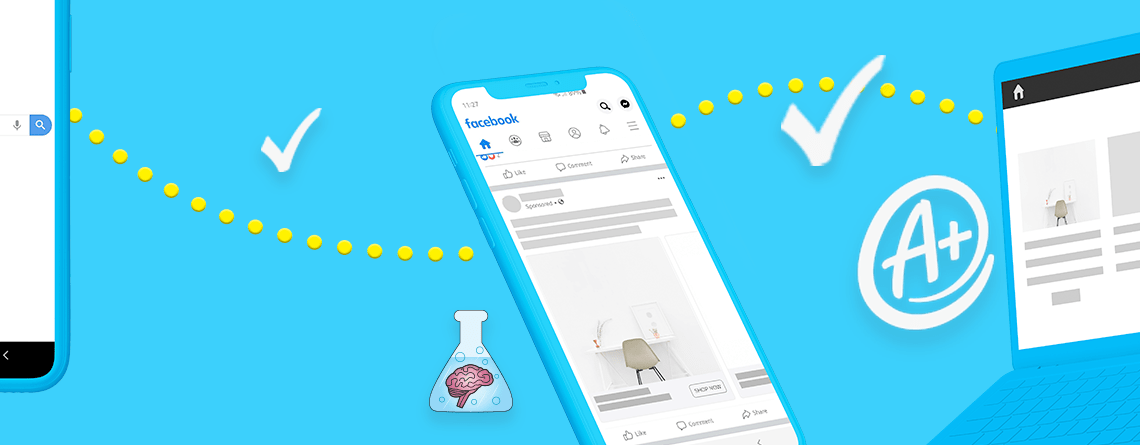When it comes to attribution, don’t let your agency mark their own homework
The role of the agency is ever-changing, and always under debate. Although agencies have cross-channel expertise, tech resources and relationships with media owners, there are things that should never fully be outsourced. Branding, budgeting decisions, and overall strategic direction are prime examples.
I would argue for adding one more to that list: attribution.
Why companies outsource attribution
While cross-channel attribution is crucial to your strategic planning, it is also very difficult and expensive to do. Not only is it technically complex, you’re also dealing with the increasing difficulty of accessing the most accurate data to model from. Changing industry regulations, anti-tracking browser features, and walled gardens continue to impede advertisers’ ability to map customer journeys. This requires extra work cross-referencing and combining extensive datasets whilst avoiding duplicate conversions.
It comes as no surprise that attribution is being increasingly outsourced.
But while agencies’ extensive data literacy and platform knowledge make the technical challenges of attribution easier to overcome, there’s a real danger in letting them mark their own homework.
Why not let an agency do it themselves?
Attribution and context
Attribution is not purely about reporting. It serves a predictive purpose, enabling businesses to make decisions about future strategy and budgeting to continue driving growth. Choosing the best attribution model therefore requires company insights that agencies are less familiar with than the client: sales cycle length, whether a conversion has a monetary value, any TV or OOH activity, how long different conversion types take,… The list goes on.
What’s more, in-house marketing teams know their customer base best, and should have accurate and complete data on total sales or conversions, along with a broader view of their marketing mix. Any attribution model should be carefully crafted around this to best serve the advertiser, which agencies cannot do on their own.
Attribution and transparency
The agency business model incentivizes agencies to deliver great results. The better performance they drive, the more budget clients are going to invest, the more money they stand to make in fees, and the more likely they are to sell further services.
Both agency and client benefit, provided advertisers can be sure that the performance reporting is accurate and transparent.
We have always believed that clients should own their own data fully, but too often when attribution is outsourced, this is not the case. When an agency has extensive analytics capabilities, the task of attribution modelling is completely handed over. But any part of a business becoming a black box should be cause for concern; while agencies are incentivised to do great work, ultimately it is the client’s business who will suffer the most if something goes wrong.
The limitations of “attribution”
Agencies don’t have comprehensive insights into an advertiser’s business. Even if they measure attribution, this gives no sense of total competitor activity, of your market share, or of your broader media mix.
It can also be easy to fall prey to overgeneralization from agency reporting. For example, if Google Ads is seeing amazing performance, spend is often pooled in Paid Search as a result. On the face of it this is a sensible decision, but if there’s already great keyword coverage, hyper-relevant ads, and high absolute top-of-page rate, there is actually little grounds for drastic budget increases – in fact, these factors suggest limited room for expansion.
In order for this kind of context to be factored into future decision-making, advertisers need this context – transparency not just on what performance was, but what the performance means.
Finally, an attribution model is only as solid as the data architecture that it’s built on. With a poor setup you get inconsistent measurement, and when data is muddy or inaccurate, it might as well be worthless. Problems such as tagging issues or failure to coordinate between channels regularly lead to the miscounting of conversions. Common mistakes like these can lead to a vastly inflated ROI and inaccurate conclusions leading to bad decision-making. That’s why establishing robust data architecture is a joint venture.
In-house or third-party provider?
In an ideal world, every company would have the capability to do attribution themselves by hiring talented data analysts, owning all their platforms, deduplicating their conversions and creating a fit-for-purpose attribution model based on the most complete and accurate data possible.
The reality is that small and mid-sized companies generally lack the resources in terms of funds, tech and staff required to undertake attribution themselves. Larger companies may have the capability, but probably not cost-effectively.
How about third-party attribution providers? Unfortunately, these have always been expensive. And as data becomes less reliable due to new regulations or browser features, it also becomes less valuable; making the value for money of these providers even worse than before. While they boast official measurement partnerships and elusive cross-device capabilities, they provide little transparency on ROI, and they’ll set you back hundreds of thousands of pounds a year.
So for most companies, an agency is the best bet. But how do they task an agency with their attribution without facing the problems I mentioned above?
The answer is outsourcing the activity, but not the oversight.
How to mark your agency’s homework
Empower and equip yourself
In order to oversee an agency’s attribution modelling, advertisers need to empower themselves with basic analytics knowledge at a minimum. The marketing department should have at least one team member who knows what steps are required to do attribution well.
They should be setting clear expectations for the agency, be that briefing them on what data is most important to the marketing team, or explaining how their attribution work will fit into more comprehensive media mix modelling. The agency team will need to be forewarned of any internal decisions that affect them, such as site changes that could impact their ability to effectively track and measure customer behaviour.
Ensure transparency
1. Clients should proactively encourage their agency to show their working. Some examples include:
- Ask them to prove the value of a certain channel
- Request a full analytics audit to assess data architecture
- Discuss upgrading your digital KPIs. While agencies are primarily there to complete the fiddly, technical legwork, they are also well-placed to consult on improvements which can be made to the overall modelling process. Just remember, the final decision is the marketing team’s to make.
2. Instil a test-and-learn mindset
Perhaps most importantly, an agency suggesting areas for improvement should be basing this on extensive experimentation, informed by cross-vertical expertise. This is all the more true when it comes to the tricky art of attribution: your model is only as robust as the tests that prove its worth.
For example: one of our clients asked us to prove the worth of our display ads to justify the value we were attributing to upper-funnel activity. With their permission, we siloed 15% of campaign budget, running high-budget display campaigns in some cities, and turning off activity completely in other cities with similar characteristics and historical performance.
By performing these geo-tests, we were able to show that site visits were 50% higher where activity was running, with a proportionate increase in conversions. This result justified our value attribution and budgeting suggestions for their display activity.
Advertisers should be asking their agencies to do this kind of testing to show their working.
3. Own your own data
Along with ensuring the most robust data collection process possible and discussing goals and expectations with an agency, advertisers should ensure they have constant and complete access to performance indicators, e.g. in a platform such as Google Analytics 360. This can even be completed by the agency, provided that the client has ongoing access to their data. Not only does this mean everyone is always on the same page, it eliminates the need to rely solely on agency reporting.
The bottom line
With a lot at stake in the model an advertiser selects, attribution should be a collaborative effort with transparency at its heart.
Where in-house marketing teams might lack the technical expertise to tag everything up properly, agencies do not necessarily have an in-depth understanding of clients’ broader media mix, their long-term aspirations for market share, or other contextual factors that could decide which attribution model is the most fit for purpose.
As agency and in-house teams bring different expertise to the table, the client-agency relationship should be built on transparent insight-sharing to build the most comprehensive view of marketing value possible.




